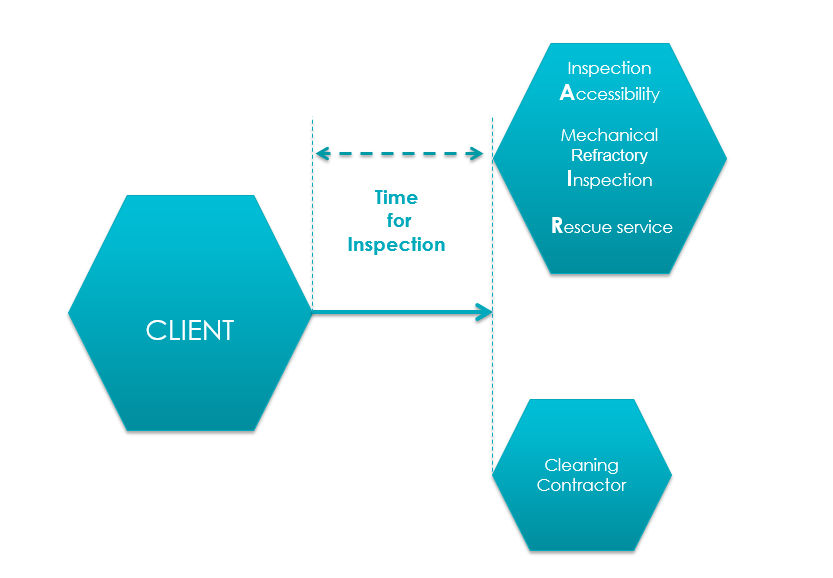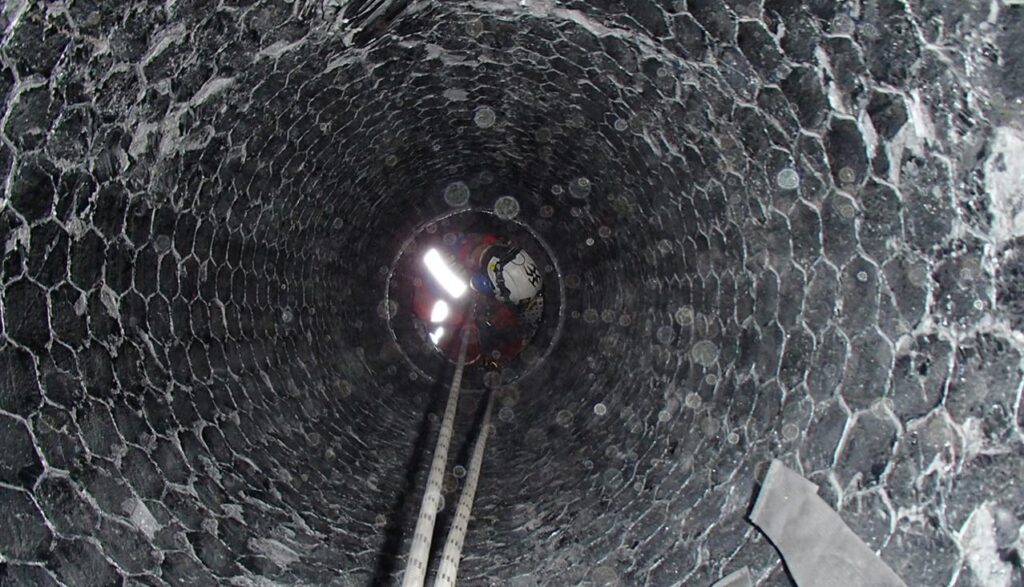AIR Concept: Access, Inspection & Rescue
Client: Statoil ASA
Asset: Mongstad FCC, RS14 Turnaround
Location: Mongstad, Norway
Challenges
During the 2014 turnaround at the Mongstad Refinery, Norway, Statoil commissioned the Axess Group to enhance the existing confined space rescue procedures during inspection and repair operations of the FCCU. The plant’s reactor and regenerator were the key areas of responsibility; however, it was extremely crucial to conduct an internal inspection in these areas due to limited means of access, associated confined space risks and difficulty exiting in case of emergency.
Solution
After an intensive risk assessment and comprehensive review of the current rescue and escape plans, Axess proposed an optimal solution using the AIR concept (fig. 1). This method supports safe access to areas within confined spaces, allows refractory and mechanical inspections within the fluid catalytic cracking (FCC) unit, and provides rescue and assistance for personnel working at height.

With Axess’ expertise in mechanical inspections in confined spaces the proposed solution was decided upon as the best solution. In collaboration with Statoil’s Fire & Rescue and HSE Department, Axess developed a safe job analysis, safe egress to all areas under consideration, and a revised rescue plan.
Training Statoil Contractors
Prior to implementing the rescue plan, Axess designed and delivered a training program for Statoil’s internal workforce. The program included drills using rope access techniques, rolling ladders and customized work platforms, to limit the need for extensive scaffolding for work teams carrying out the mechanical tasks. Simulated worst-case scenarios were presented to demonstrate the safe methodology for escape and rescue/ retrieval of potentially injured staff.
Prior to ingress into a confined space, Axess gave Statoil’s contractors a thorough pre-entry briefing as well as specialist climbing equipment such as harnesses, industrial climbing helmets, and head torches. Axess’ safety leaders provided job-specific training focused on attention to detail, personal safety management and building confidence in the capability of the rescue team.
As inspections and remedial works progressed, the employees eventually gained confidence in entering dangerous areas, allowing them to perform tasks more efficiently.

Benefits
Deployment of personnel deeper into areas requiring discovery inspection and refractory repair led to increased safety and productivity during the FCCU turnaround schedule.
Contrary to the traditional method of access, the AIR concept allowed the onsite rescue team to lower inspection personnel into areas of interest without using scaffolding. The success of this approach prompted Statoil to re-evaluate future confined space access requirements in other areas of the refinery.
Cover Photo: “Confined Space Training” by Manchester Fire is licensed under CC BY-NC 2.0